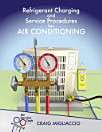Predictive Functional Control: Principles and Industrial Applications
Despre această carte electronică
Despre autor
Jaques Richalet was born in Versailles, France, in 1936.
He studied aeronautical engineering at ENSAE in Paris and graduated in 1960. He then went to Berkeley, USA, where he obtained his MSc degree under the guidance of Prof. Zadeh. Back in Paris he worked in the field of applied mathematics and received his PhD in 1965.
His interest in model-based predictive control started as early as 1968. In the same year he founded the process engineering consulting company ADERSA with a major breakthrough being the first commissioned application of model based predictive control to a binary distillation column in 1973.
Since then he has been active in the areas of process identification, modelling and diagnosis methods such as predictive maintenance. Applications range from petrochemical and food industry to faster systems as encountered in the automotive and defense sector.
He was a manager of ADERSA till 2001 and is still working as a consultant for modelling and predictive control. He now lives in Versailles in France.
In his academic career he published more than fifty articles as well as three books on identification and predictive control. He has been president of the National Committee of Automatic Control and chairman of EEC Interest Group "CIDIC". For his achievements he was awarded the status as Chevalier de l'Ordre National du Merite and many researchers would probably agree to his being called "the grandfather of predictive control". He received the Nordic Process Control Award in 2007. He is now retired.




